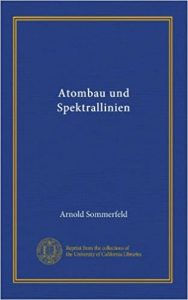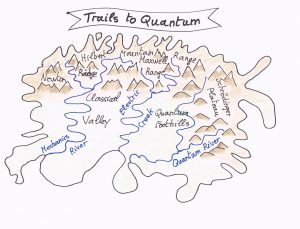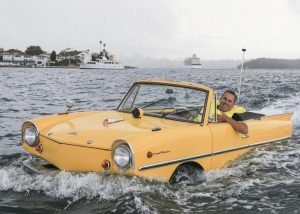
This work is licensed under a Creative Commons Attribution 4.0 International License.
Quantum mechanics is, in 2023, almost 100 years old if we count from the year 1926 that Born, Heisenberg, and Jordan published their paper. Quantum phenomena have been officially recognized since 1900. Quantum mechanics has been very successful as proven by most of the technology society enjoys today. That technology was developed by correctly using quantum mechanics to explore and design. However, there is still something missing about quantum mechanics, namely a clarity and consistency in the theoretical description and the foundational concepts. This is very different from all other theories in physics. In this page we will discuss this topic and try to pin down what is missing and explore possible paths to improve the situation and bring more clarity. This will be done by short discussions about a topic. When all of these comments and explorations are put together, it is hoped, that we will come closer to understanding what is missing so that some clever people can figure out how to fix the gaps.
Table of Contents
- Critique of the history of quantum mechanics and why it matters
- Data science pioneers and the legacy of old quantum theory
- Trails of quantum mechanics
- Born’s Rule: A look behind the scenes
- Particle-wave duality
- Theory and metatheory in physics
- Classical and quantum computing theory: a comparison
- Data science of quantum phenomena and the development of quantum theory
- Closer look at superposition and entanglement
- Position: operator or coordinate?
Critique of the history of quantum mechanics and why it matters
A first note explores the following points in quantum mechanics:
- There are two fundamental activities in science:
- Exploring the quantum phenomena by gathering and organizing data, and
- the formulation of a theory that, by deduction from a small number of principles, can derive and explain the observed phenomena.
- Teaching young students by focusing on the observation of phenomena and organizing the data works.
- The description of statistical states in quantum mechanics using the Von Neumann operator is incorrect.
- To go beyond description of phenomena, observations and measurements, into engineering of complex systems, like quantum computers, a solid theory is required, that goes beyond a set of pragmatic rules.
- View or download the first note.
Data science pioneers and the legacy of old quantum theory

Scientific theories are developed from formulating patterns and regularities in observations of phenomena. That is how physics got to Newtonian mechanics, Maxwell electrodynamics, thermodynamics, and many others, including quantum mechanics. However, with quantum mechanics the process turned out to be not as straightforward. The first phenomena recognized as quantum appeared around 1900. A theory was developed that used concepts and mathematics from classical physics with the addition of “Quantum Conditions” that selected from many classical possibilities the few that seemed associated with observed phenomena in the microscopic world, mostly atoms at the time. The theory is masterfully summarized by Arnold Sommerfeld in his 1921 book “Atombau und Spaktrallinien.’ These physicists did what data scientists do today: extract knowledge from data collected about observed phenomena.
In 1926, Heisenberg and Schrodinger and their coworkers formulated a new mathematical framework to describe and derive the observations of quantum phenomena more accurately and more comprehensively, including phenomena that the old quantum theory could not explain. The new mathematics rapidly replaced the old formalism and the methods described in Sommerfeld’s book were relegated to the bookshelf as “Old Quantum Theory.” But at the insistence of especially Bohr the classical concepts of Old Quantum Theory were kept, as will be discussed from several angles further down on this page. In particular the insistence of classical concepts led to the formulation of classical models, which then not surprisingly feature particles with a wave-like personality disorder. Instead of selecting particular classical trajectories by the Quantum Conditions, the new quantum mechanics stipulates that there are no trajectories in general, only in the context of defined experimental settings.
This formulation has worked well for all the phenomena and experiments done in the first century of quantum mechanics, which has resulted in a plethora of advanced technologies that have transformed our way of life and our society. However, the the task of building quantum computer seems to bring into question the data science and modeling approach in that the highly idealized description by the Born Rule of the measurement process seems inadequate to correctly handle the billons of measurements per second that need to be carried out to implement error-corrected qubits on realistic quantum computers with millions, and likely billions, of qubits; see the fourth note below.
Trails of quantum mechanics

The drawing shows the development of quantum mechanics as a geographic map of an imaginary place. The valleys are where people live. That is where they explore the phenomena of physics and use what they learn to develop technology. The Classical Valley has two rivers, Mechanical Rover and Electrical Creek, to symbolize the particle and wave aspects of classical mechanics. The theory is shown as mountain ranges, because they are harder to get to and explore. But that is where the rivers get their water, which brings prosperity to the valley. There are two mountain ranges, Newton Ridge and Maxwell Range, again symbolizes two representative theories in classical physics. Not all important physics theories are represented in this map, they should be; but we want to focus on the development of quantum mechanics. Quantum phenomena are represented by the Quantum Foothills, a bit harder to get to then the valley. The theory behind quantum phenomena is shown as Schrodinger Plateau. But the full theory are the high and still not fully explored Hilbert Mountain Range, which extends behind the Newton Ridge and Maxwell Range.
Born’s Rule: A look behind the scenes
A second note takes a closer look
- at the probability postulate in quantum mechanics, known as Born’s Rule, and
- argues that there is a lot happening during a measurement that should be properly described as a physical process.
- The describes the statistical state for quantum systems as a probability distribution on the Hilbert space of states.
- View or download the second note.
Particle-wave duality
The concept of particle-wave duality, as part of the complementarity principle in quantum mechanics, is supported by numerous experiments.

However, as a theoretical concept it is not of high-quality. The particle-wave duality in quantum mechanics can be compared

to the concepts of an amphibious vehicle, i.e. vehicle that can move both on land and on water.
- Observations are made of people moving on land (photo of truck driving) and on water (photo of boat navigating).
- An effective description, like particle-wave in quantum mechanics, hitches the two together to make an amphibious vehicle (photo of a truck pulling a boat on a trailer).
- A robust design of an amphibious vehicle looks like a single vehicle that can operate both on land and on water (photo of Volkswagen model 770)

Duality of truck and boat
Physics has examples of distinct concepts that were observed and then unified into a new, more powerful single concept that underlies the distinct phenomena. In these cases the unified concept also turned out to be mathematically elegant and powerful.
- The first example is the unification of electric and magnetic fields brought about by Maxwell introducing a new term in the existing equations for electric and magnetic fields and thereby creating the set of equations of electrodynamics named after him.
- Einstein’s theory of General Relativity unified the quite disparate concepts of spacetime and gravity by introducing curved spacetime geometries.

Unified concept: amphibious vehicle on land 
Unified concept: amphibious vehicle on water
Theory and metatheory in physics
The topics of the third note are:
- The classical physics view of measurement is that a measurement process can be treated as part of a metatheory of physics, i.e. the theory about doing physics, rather than measurement being required to be part of the theory of physics as a physical process.
- From the development of Newtonian mechanics and Maxwell electrodynamics, as a few examples, the metatheory of physics recognizes three stages of a theory (observation, phenomenology, and explanation); this idea is then applied to quantum mechanics.
- View or download the third note.
Classical and quantum computing theory: a comparison
The current interest in everything quantum is driven by the desire to build a quantum computers. The fourth note explores some of the challenges of building reliable machines
- To build machines, a reliable theory that provides explanations is needed, not just a data science model that fits the data
- Computer science for classical computers and quantum computers is solid and treats both systems with great similarity, but also some crucial differences
- Measurements play a crucial role in the operation of quantum computers and that poses some challenges.
- View or download the fourth note.
Data science of quantum phenomena and the development of quantum theory
The data science view that gained prominence in recent decades provides methods to manage large amounts of data from observations and develop models for the observed phenomena. We take a look at the development of the theory of quantum mechanics in the fifth note by looking in detail at the Stern-Gerlach experiment.
- Data science builds models to organize and make sense of data from observations.
- The development of quantum mechanics used a data science approach (before that term was invented) by building classical models, Bohr-Sommerfeld style.
- We describe the Stern-Gerlach experiment in detail.
- First from the point of view of the data scientist, which is the role the founders of quantum mechanics took.
- Then following the intuition of the young Heisenberg, when he told Bohr in 1926 that he felt one should “follow the math.” But he never did not pursue this path, because his mentors advised against it.
- View or download the fifth note.
Closer look at superposition and entanglement
When looking at quantum phenomena of two systems in a coherent quantum state, the important feature of “entanglement” is revealed; but in the mathematical framework of quantum mechanics, it is just a superposition, a linear combination of states. This subtle distinction is explored in the sixth note.
Position: operator or coordinate?
It is valid to explore the nonrelativistic limit by doing calculations that assume all speeds are small compared to the speed of light. In the seventh note, we take a closer look at this problem when the concepts of space, i.e. position, and time are fundamentally different.
The full-length paper on which these notes are based has been published in 2019. “On Classical Systems and Measurements in Quantum Mechanics”, Erik Deumens, Quantum Studies: Mathematics and Foundation, (2019) 6(4), 481-517 (37 pages), doi: 10.1007/s40509-019-00189-3 (published online) (PDF)
Updated 28 July 2025